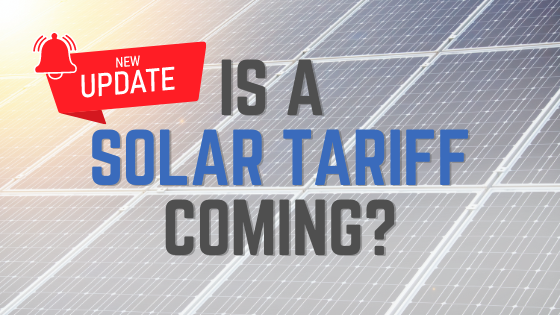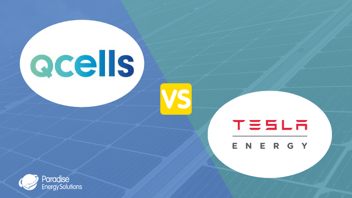
On June 5, 2022, President Biden announced a 24-month tariff exemption for solar panels produced in Southeast Asia. This calmed the growing worry in the solar industry, brought on by the potential extension of steep Chinese tariffs from 2012.
This exemption is a response to the shockwaves sent through the solar industry earlier this spring when the U.S. Department of Commerce announced they’d be investigating possible tariff circumvention on Chinese goods by manufacturers in Cambodia, Malaysia, Thailand, and Vietnam.
What Was At Risk With These Tariffs?
The Department of Commerce’s investigation puts over half of the United States’s solar panel supply at risk, creating a potentially existential threat for the industry. This comes at a time when the country and the world are trying to combat high energy prices and substantial supply chain shortages.
SEIA estimated a 19% decline in near-term solar projects after the investigation was announced. Should the investigation find evidence of trade violation, Wood Mackenzie expected new installations to shrink by 66% of 2021 install rates.
Why the stark numbers? If the investigation finds manufacturers guilty, a 50% to 250% tariff could be levied on their panels.
But Biden’s tariff exemption brings a welcome sigh of relief to the solar industry. It means no additional tariffs will be levied on panels imported from the countries in question for two years, and the tariff won’t be retroactive, which is a significant development.
How The Tariff Exemption Will Impact Your Solar Install
The great news is this tariff exemption should help keep the cost of solar panels down, although it could be weeks or months until any true impact is felt.
If the manufacturers under investigation are not found guilty of circumventing these tariffs, prices should stay steady once the tariff exemption expires. However, if circumvention is occurring, the cost of purchasing solar panels will surely increase.
If the United States can ramp up production to fill this need in the meantime, price increases could be more modest.
Is There A Long-Term Solution?
Tariffs play an essential role in protecting the United State’s economy. But domestic production wouldn’t be able to fill the hole left by Southeast Asian panels overnight. It can take years to create a new solar panel manufacturing plant in the United States, and we’d need to more than double current production rates to cover the loss from Southeast Asia.
To help expedite this process, Biden also invoked the Defense Production Act. This will free up funds for loans and grants used to expand the production of domestic solar panel manufacturing. However, it could still be years until this affects the US supply chain.
Is Now A Good Time To Install Solar Panels?
With the threat of price increases and talk of tariff circumventions, it’s easy to wonder if you should put off your solar project for another time.
But in truth, today is still one of the best times to invest in solar. Solar allows you to lock in your electric rate for 30 years, protecting your budget from the soaring energy rates we're all facing.
In addition, you can still take advantage of the Solar Investment Tax Credit while it’s at 26%. This is a tax credit from the federal government for 26% of the entire cost of your solar installation. In 2023, it drops to 22%, and in 2024, it drops to 10% for businesses and goes away entirely for homeowners.




